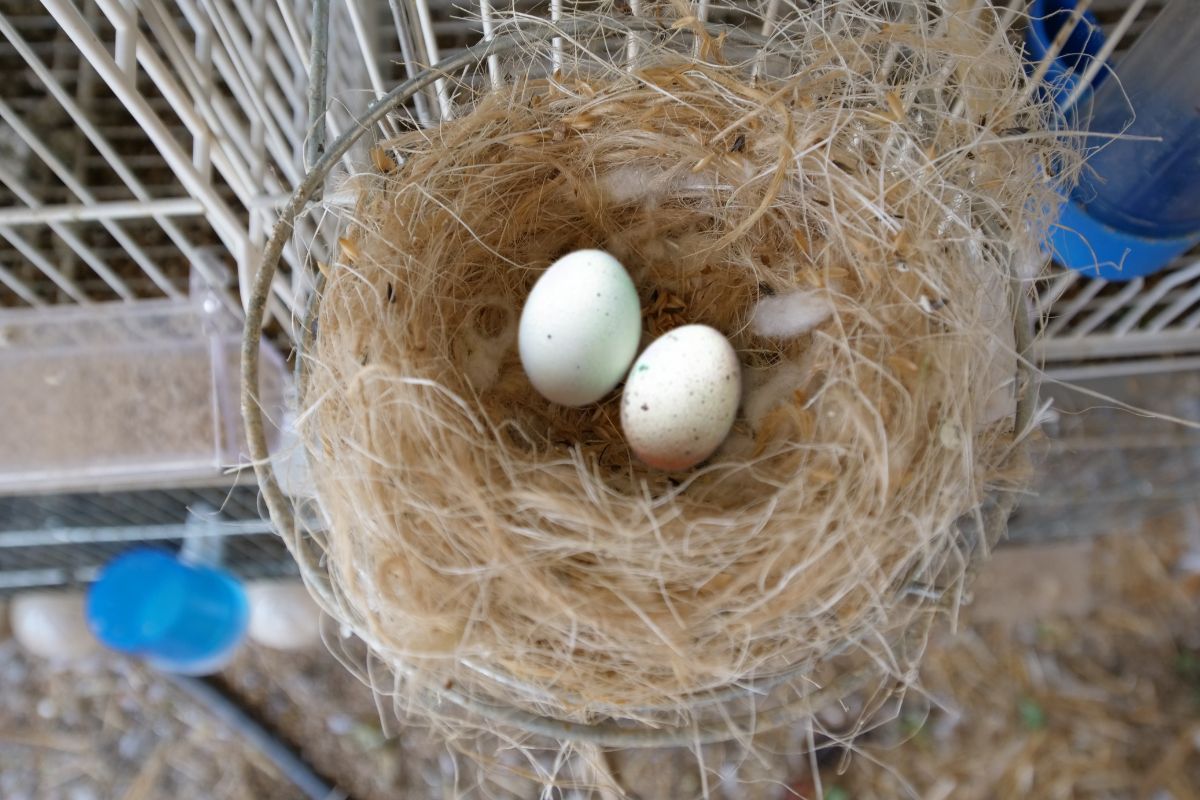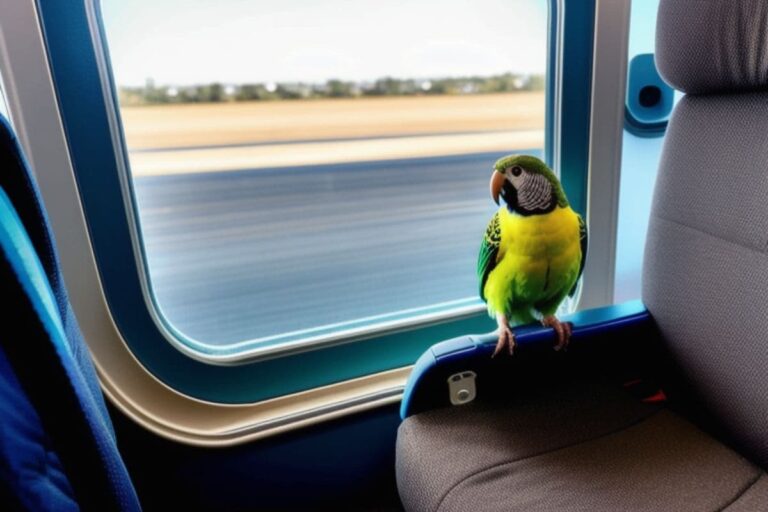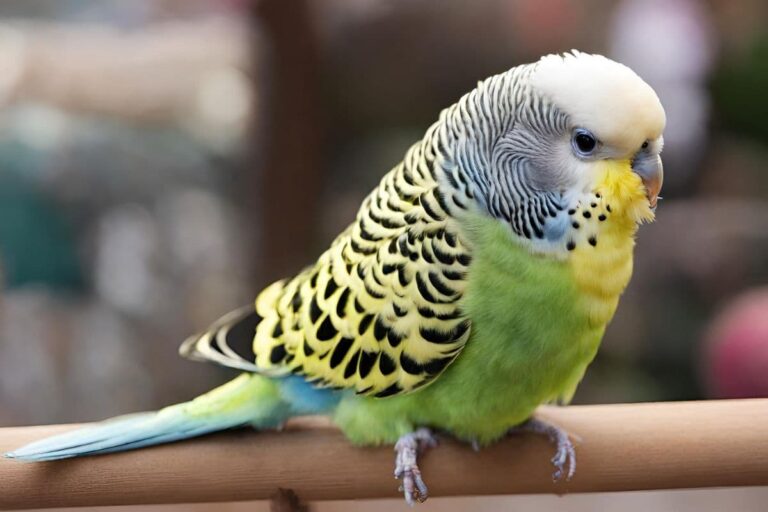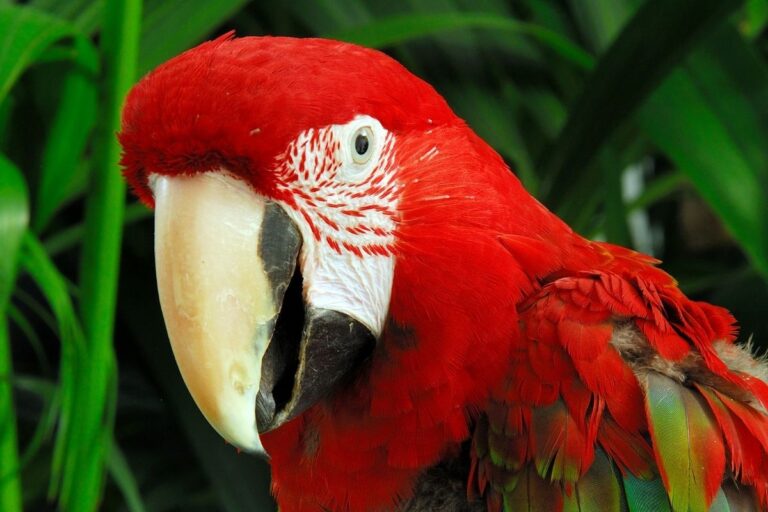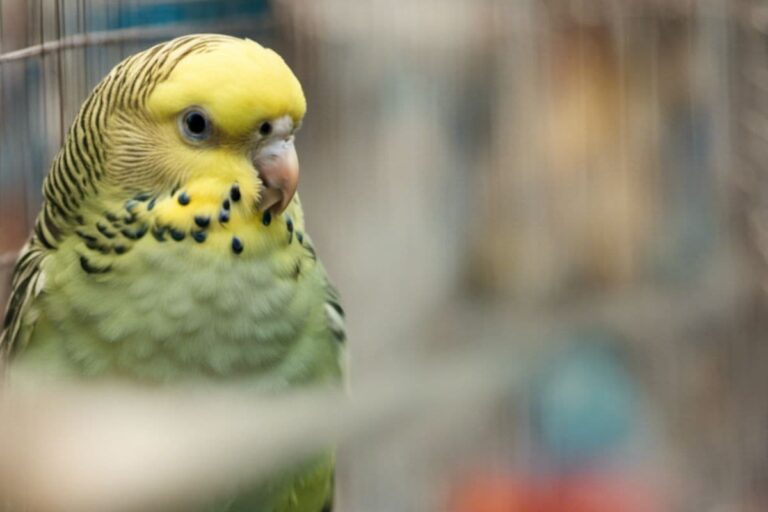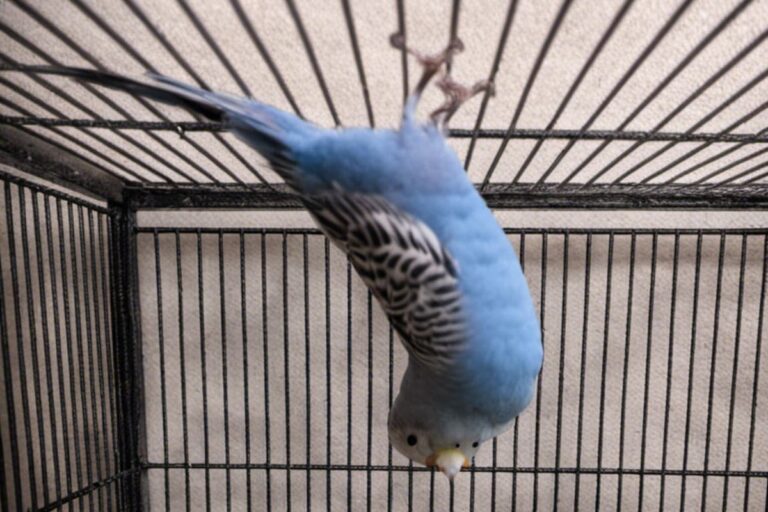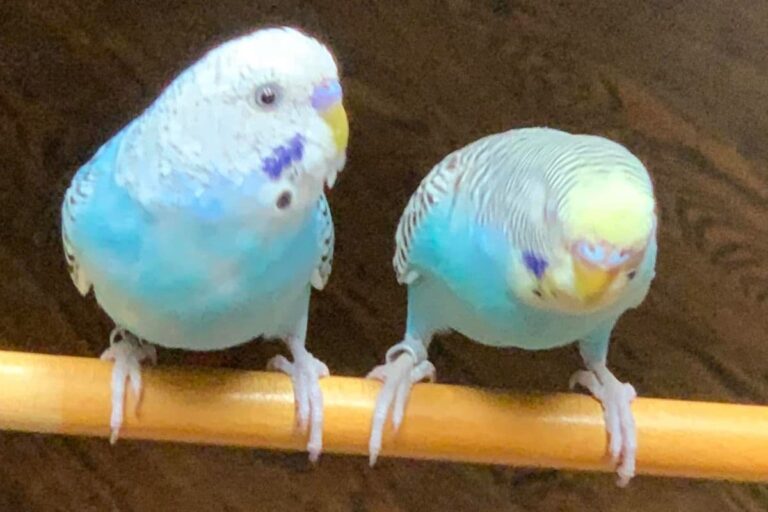Parakeet Laying Eggs – What Should I Do
Disclosure: The opinions expressed in this post are my own. This post may also contain affiliate links, which means that I will receive a commission if you decide to purchase through my links, at no additional cost to you. As an Amazon Associate, I earn from qualifying purchases.
If you’re a first-time parent of a parakeet, you may be wondering what to do when your little one starts laying eggs. Here are some tips to help you through this exciting (and sometimes overwhelming) time!
What Should I Do When My Parakeet Has Laid Eggs?
If you have a female parakeet that has never been paired with a male, it is possible that she will lay infertile eggs. This is not harmful to her and she will likely stop after a few times. If, however, you have a female and male parakeet living together, she will probably lay fertile eggs. These can hatch into baby birds if you do nothing, but if you do not want baby birds, there are also steps you can take to prevent this from happening.
If There is a Nest Box Present
If your parakeet has a nest box in its cage, you shouldn’t do anything. The female will lay her eggs in the box, and the male will help her incubate them. Once the babies are born, they will spend about 4-5 weeks in the nest box before they are ready to leave it. At this point, you should remove the nest box so the mother bird can raise her chicks on her own. The chicks grow up and become fully independent at around 9 months old.
What If There is No Nest Box?
If your parakeets don’t have a nest box, you’ll need to make sure you build one for them. You can buy an inexpensive wooden or plastic nest box, or you can use a cardboard box. Make sure the box is big enough for both parents to fit comfortably inside. Place the box somewhere where the parents can easily see it and get to it. They will start using it as soon as they begin nesting.
Looking to get an affordable nest box? Check out the Parakeet Breeding Nest Box by YJJKJ.
What If Parakeet is Not Using the Nest
If your parakeet is uncomfortable with her nest, she may stop laying eggs. She will unlikely be using the nest if she doesn’t feel comfortable with it. You can try to make her more comfortable by adding more nesting material to her cage or by giving her a new nesting box. If she still does not seem interested in using her nest, you may need to remove it from her cage.
Best Nesting Materials For Your Parakeets
There are many materials you can use for nesting, but some are better than others. Here is a list of nesting materials that we recommend for your parakeets:
- Natural coconut fibers (Natural Bird Nest Coconut Fiber by Prevue Pet)
- Natural cotton fibers (Bird Nesting Cotton by Lixit)
- Dead twigs and leafs
- Pine needles
- Strips of tree bark
- Dried grass (that are free from chemicals such as pesticides)
- Or premixed bird nesting materials made out of jute silk, hemp rope, cotton and wool
Nesting Materials to Avoid
There are some nesting materials that you should avoid. Wood shavings are commonly used as bedding material for many kinds of pets, but many of them are generally not ideal for parakeets, as they contain chemicals from the phenols and aromatic hydrocarbons that could cause respiratory tract irritation. Other kinds of bedding materials that are not meant for parakeets may contain toxic chemicals that are harmful and even deadly to your parakeets. Here are some common materials that we recommend you to avoid using for your parakeets:
- Pine wood shavings
- Cedarwood shavings
- Cat litter
- Walnut sawdust
How To Tell If A Parakeet Egg Is Fertile?
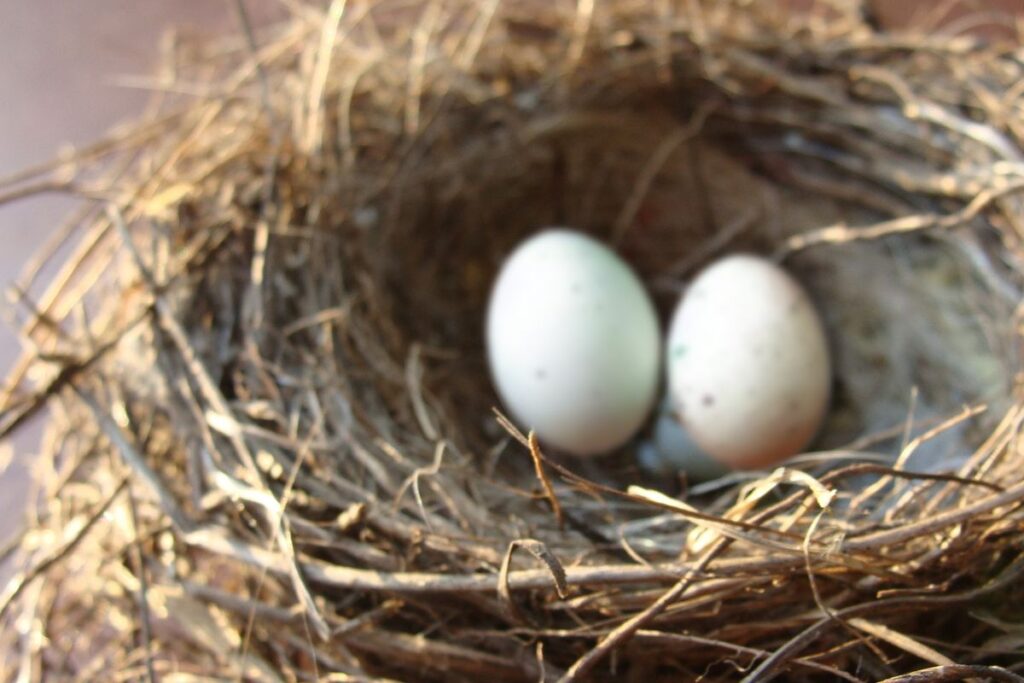
During the breeding season, female parakeets will lay eggs even if there is no male present. However, these eggs will not be fertile and will not hatch. If you want your parakeet to have babies, you will need to provide her with a mate.
To tell if a parakeet’s egg is fertile, hold it up to a light source and look for a small black dot in the center of the egg, with blood vessels running through. This dot is the embryo and indicates that the egg is fertilized and will probably hatch.
How Long Does It Take For Parakeet Eggs To Hatch?
Once you’ve found your parakeet’s eggs, it’s time to start waiting for them to hatch. Incubation generally takes 18 days, give or take a day. The eggs should be kept at a consistent temperature of around 98.6 degrees Fahrenheit, similar to the human body’s temperature.
How to Incubate Parakeet Eggs
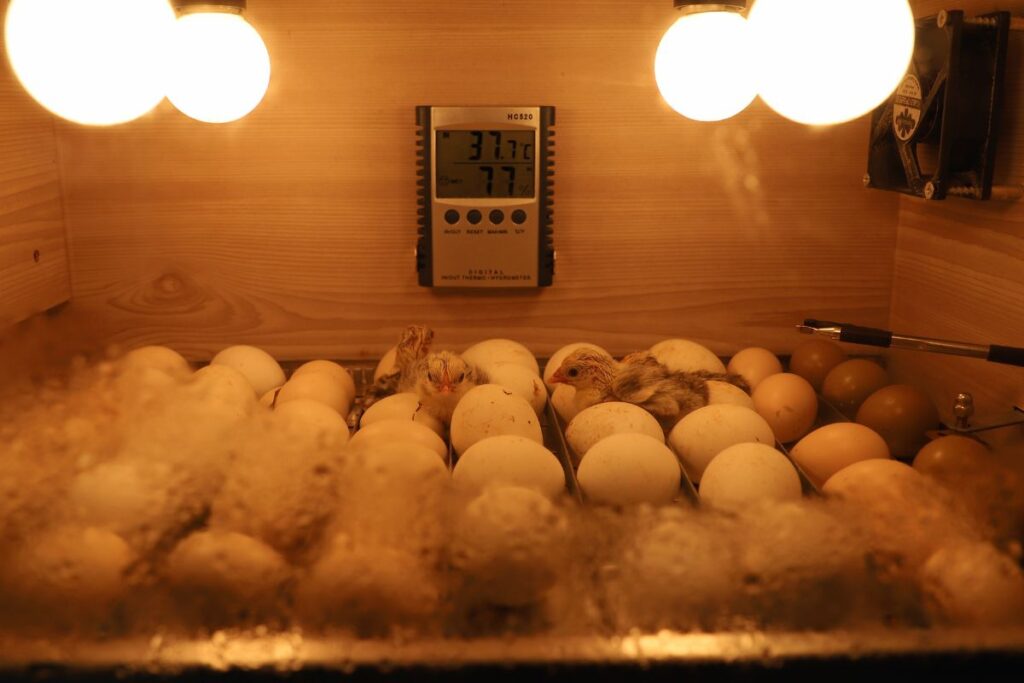
You can use a special incubator designed for this purpose. These devices keep the temperature constant and allow you to monitor the progress of the eggs. They also come equipped with timers so you know when to turn off the heat.
Here are some incubators we recommend:
- HatchMate™ Egg Incubator with Automatic Egg Turning and Humidity (9 – 12 eggs)
- Brinsea Mini II Advance Automatic 7 Egg Incubator (manual egg turning required)
- Magicfly Digital Mini Fully Automatic Egg Incubator (with auto egg turning)
Alternatively, you can place the eggs on top of a heating pad set to the same temperature as the incubator, although this is much more troublesome as it requires you to be keeping close watch on the egg and needing to turn the egg regularly to ensure the heat is evenly distributed. Too much heat, especially above 104.9 degrees Fahrenheit, and you’ll also be damaging the embryo.
What to Do Once Parakeet Eggs are Hatched?
It depends if they have their parents to care for them. Hatchlings are very dependent on their parents, all the way until they fledge. Leaving them on their own will very likely lead to a low survival rate. So, it’s important to ensure that they receive the necessary care during this crucial stage of their lives.
Did you know? It’s not easy to identify the gender of a parakeet when they are still young, as they have not produced the sex hormones that affect their physical characteristics which differentiates them from male and female.
If They Have Parents to Care for Them
Well, the most ideal scenario is for their parents to care for them. Parakeets generally have the instinct to know how to care for their chicks. You just need to make sure that they’re provided with enough food and water.
The egg shells can be cleared once they have hatched, but you should only clear out and remove the nesting box once the fledglings have left the nest.
If Their Parents Are Not Present
In case their parents aren’t available, you can still do something about it. It should not be a surprise that lots of your time and attention needs to be devoted into caring for the newborns.
Check out our article on How to Care for Newborn Baby Parakeets, if you need a detailed guide on this.
Firstly, you’ll have to transfer the hatchlings from the incubator over to the brooder. But this should only be done once the babies have dried and fluffed up. Transferring them too early could reduce their survivability rate as the dampness of their fur could cause them to be too cold.
Then over the course of the next few weeks, you will be hand-feeding them frequently. You can do this by using a syringe filled with suitable food. We recommend you using the Kaytee Exact Hand Feeding Formula. You’ll start off by feeding them as many as five times a day. As they get older, you can start reducing the frequency down to around twice daily.
Baby parakeets will wean at about the 8 to 10 weeks mark. You may start to encourage the weaning process and introduce conversion diets during the 4 to 5 week mark. Once they have weaned, the babies will no longer require the same level of care anymore, as they should be fully independent to manage eating themselves.
If you have any questions about caring for your parakeet’s eggs, or if you think there may be something wrong with them, be sure to consult with a veterinarian or experienced breeder before attempting to incubate them yourself.
Important Tip: Keep a Lookout for Splayed Legs
Splayed legs are a problem that occurs quite commonly in developing birds, that should be identified and treated early. They are usually caused by factors such as inappropriate bedding and poor nutrition.
How to Hand-Feed Parakeet Babies
Although a spoon also works, the best way to feed baby parakeets would be to use a syringe, so that you can control the amount of food that goes into each serving and meal.
When you first begin hand-feeding the babies, you’ll want to give them small amounts of food. You’ll be able to gauge the amount of food they have consumed by feeling their crop, which is a thin-walled pouch located at the base of their oesophagus. The crop is where birds temporarily store food at before it moves its way to the stomach. If their crop is filled, and you continue to feed them too much, then they might start to regurgitate, or worse, choke. For growing birds, try not to allow the crop to become completely empty.
Weight gain should always be monitored during this period.
When and What to Feed Them for the First Time
It’s important not to feed them too early. You should wait for at least 12 hours from when they’ve hatched before feeding them for the first time.
Start off by feeding them with only 1 drop of water every hour until they are accustomed to it and are passing stools.
Their crops will start to expand slowly, and you’ll be able to add in a few drops of hand feeding formula once every 3 to 4 hours, for 5 to 6 times a day.
After around 6 to 9 days, they should start to open their eyes. This is when you can reduce the feeding frequency to 2 to 3 times a day every 6 hours.
Do I Need to Feed Baby Parakeets at Night?
This is the time where they will be sleeping or resting and you do not need to feed them from night till around 6am in the morning.
First Step is to Make Sure Their Beaks are Wide Open
The baby birds will be fairly eager to eat most of the time, and will open their beaks wide. For occasions where you encourage the baby parakeet to open its beak, gently tap on their beaks with the syringe, and they should be aware that it’s feeding time.
When Do You Start Administering or Pushing the Syringe?
You’ll want to administer the food while they are swallowing, which is a motion that’s easy to identify, observable with their heads bobbing up and down.
Once you see this motion, administer the food in a steady manner. The food should be delivered to the crop fairly efficiently, and you’ll be able to notice the expansion of the crop visually and by feeling it.
How Much Food and How Often to Feed Them?
When you’re ready to move onto the next step, you’ll want to increase the size of the meals. However, don’t go overboard and feed them more than what is recommended.
As the babies grow, you’ll want to gradually decrease the number of meals that you feed them. By doing this, you’ll ensure that they will develop the proper appetite. This means that they’ll be able to eat properly when they reach adulthood.
It’s important to remember that you shouldn’t force feed them if they don’t feel like eating. Instead, you’ll want to make sure that they are hungry enough to eat. If they refuse to eat, then you’ll want to wait until they become hungry again. Just make sure that their crop is not completely empty.
The Best Food for Parakeet Hatchlings
If you can get your hands on formula, that’s probably the best type of food most folks can use. A good formula is rightly balanced and high in nutrients. You’ll be rest assured knowing that you’re providing the proper nutrition to your baby birds.
Our Most Recommended Food for Parakeet Hatchlings:
How Can I Stop My Parakeet From Laying Eggs?
No matter what the reason, if you don’t want your parakeet to lay eggs, there are a few things you can do to discourage her. First, make sure she has a healthy diet and is getting enough exercise. An unhealthy bird is more likely to lay eggs, as is one who is bored or doesn’t have enough to do.
Second, if your parakeet has a mate, make sure they spend plenty of time together. A bonded pair of birds is less likely to want to reproduce. If you don’t want your bird to mate at all, you can remove the male from the cage.
Finally, you can try using fake eggs. Place a few in the bottom of the cage, and your bird may be fooled into thinking she has laid them herself. This can be enough to stop her from laying real eggs.
1. Removing Nest Box and Nesting Sites
By removing your parakeets’s nest boxes and preventing them from creating nesting sites, it is less likely that they will build nests. You can also remove any items that look like nesting material, to discourage them from building nests.
2. Don’t Remove Eggs That Have Already Been Laid
If your parakeet has laid her eggs, don’t remove them. It’ll cause her to just lay even more eggs. We’re not exactly sure why this happens, but it could be from the parakeet overcompensating for her lost eggs. If you are doing this, be absolutely sure that the eggs are unfertilised though, or else you could end up with new hatchlings.
3. Use a Dummy Egg
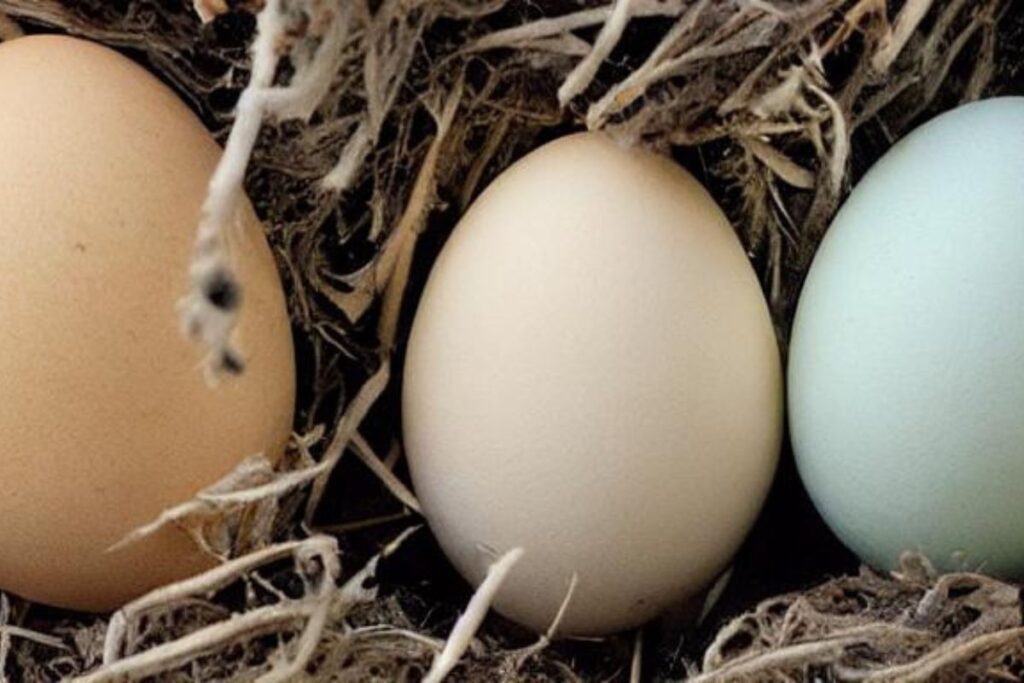
Dummy eggs are actually a highly effective way to prevent your parakeet from laying eggs. They work by fooling the parakeet into believing that that was the egg that she had laid. The dummy egg looks very similar to a real egg, so it won’t raise any suspicions. You’ll notice this when the parakeet sits on her eggs out of instinct, and care for them as if they were real.
However, you should only use the dummy eggs by replacing her actual ones. Putting a dummy egg in her nest may only trigger her to start laying instead.
An alternative way is to hard boil her real eggs and return it back (after its cooled).
Remember to only use non-toxic plastic eggs from a reputable pet shop.
We recommend the FOIBURELY Parakeet Plastic Eggs or DummyEggsⓇ USA Budgie Dummy Eggs as they are using high-quality, toxic-free plastic that looks incredible realistic, just like the real thing.
4. Mental Stimulation – Rearranging Layout & Cage
If you keep your parakeets mentally stimulated, it will lessen the chances of egg laying. Try rearranging the layout in the cage by moving perches, toys, and food and water dishes.
You can also shift the entire cage to a slightly different location frequently, to induce a little bit of stress to your parakeets, which then discourages egg laying behavior.



